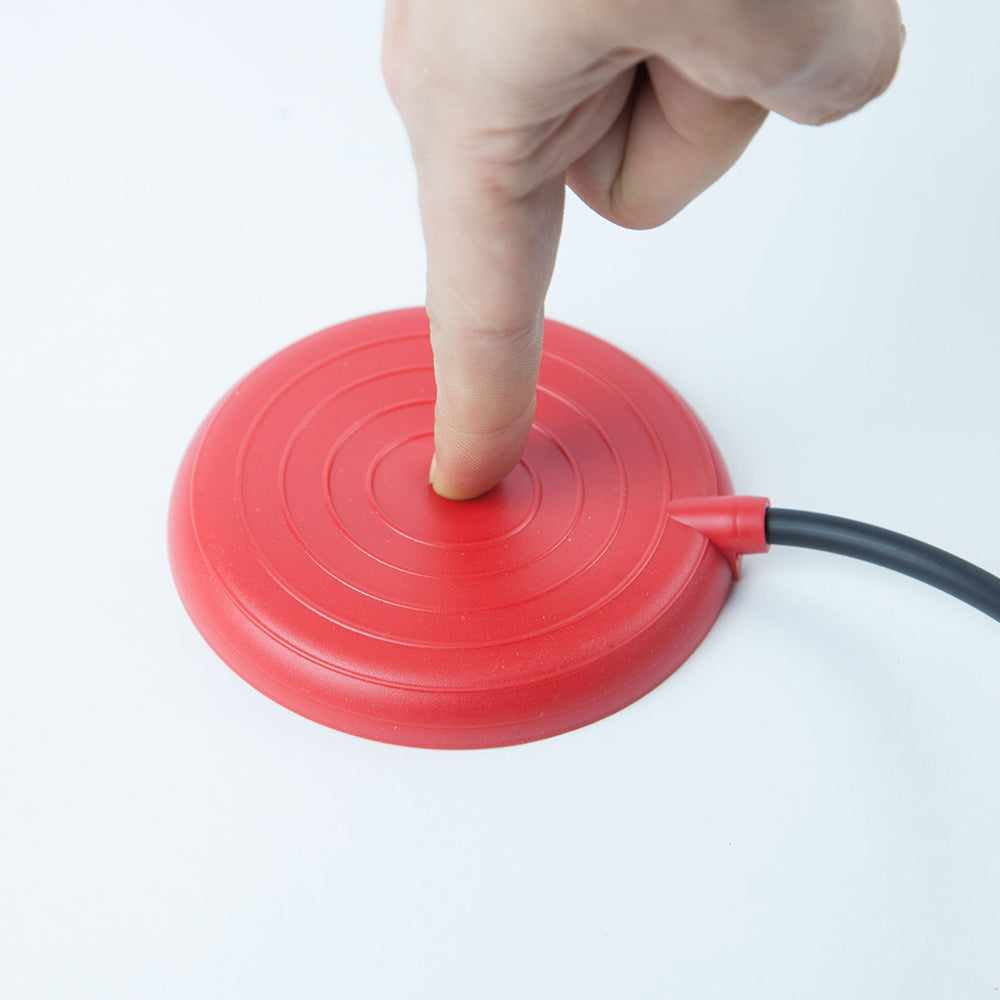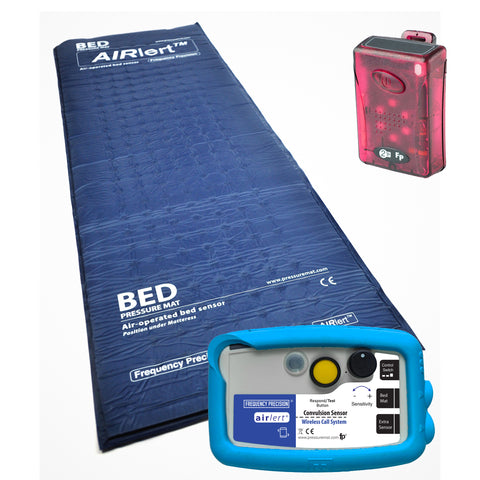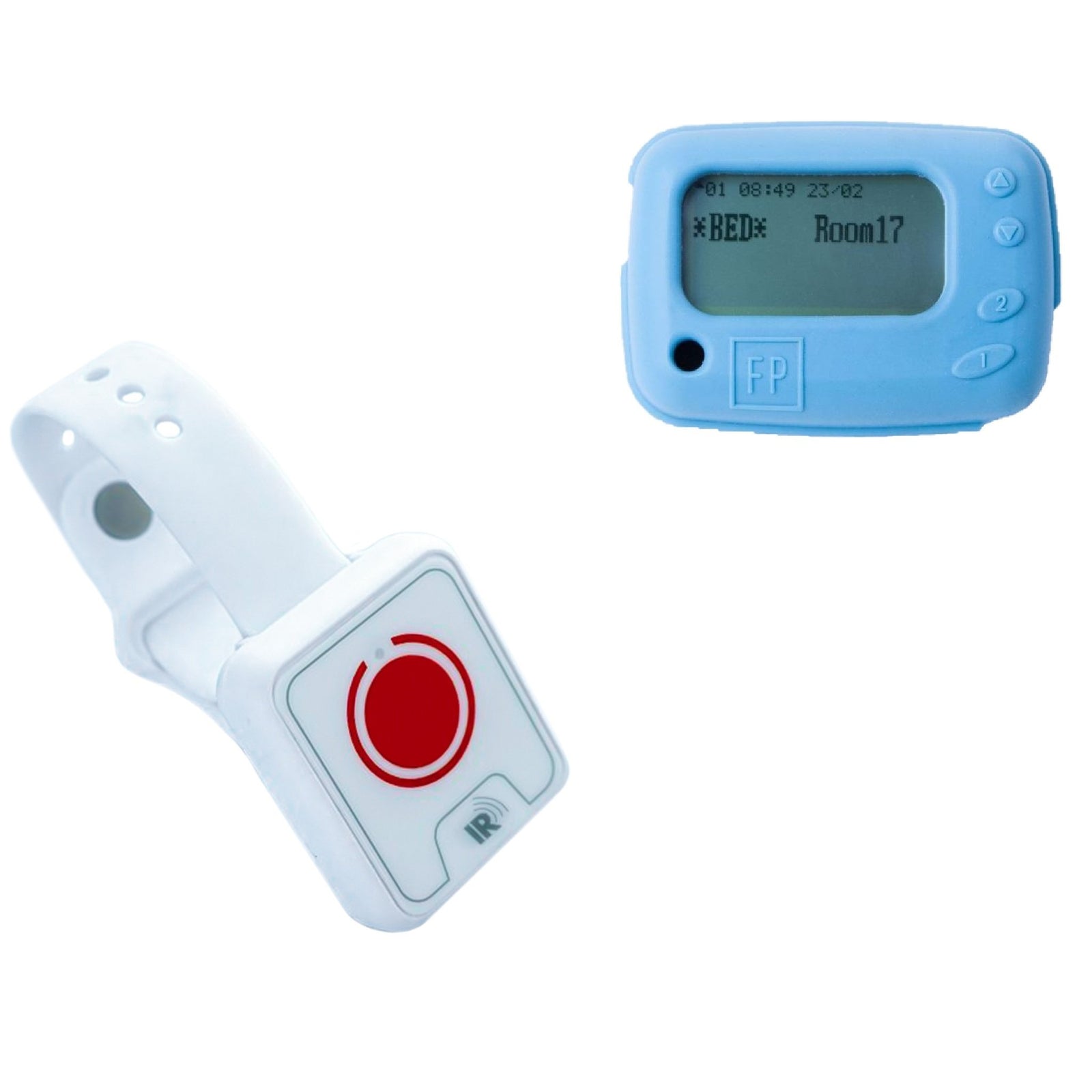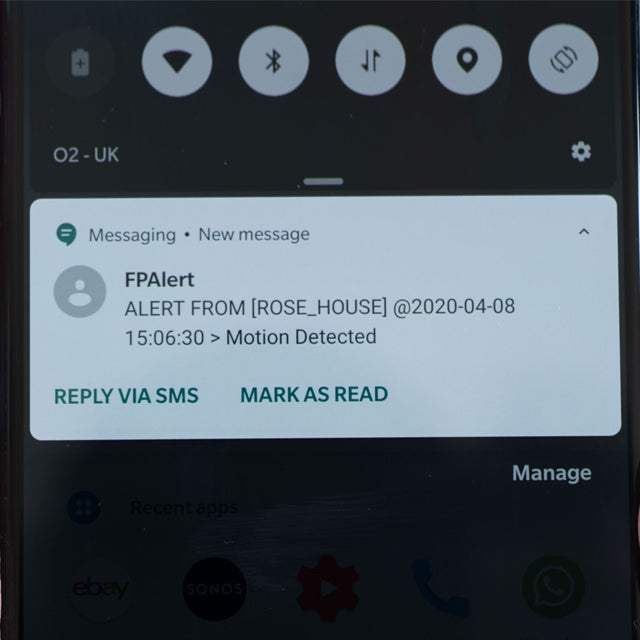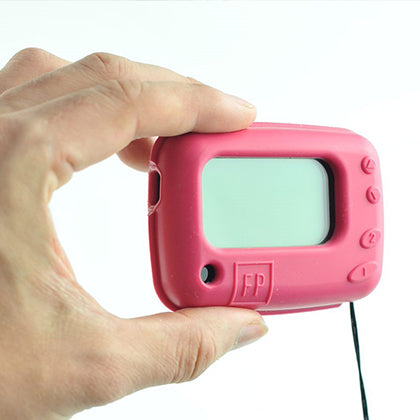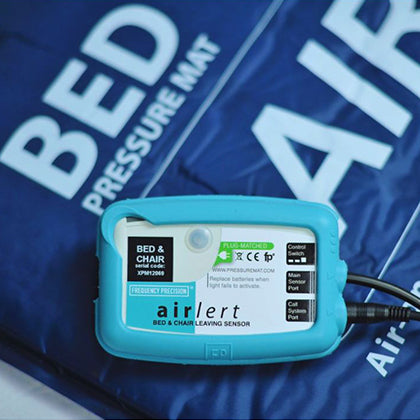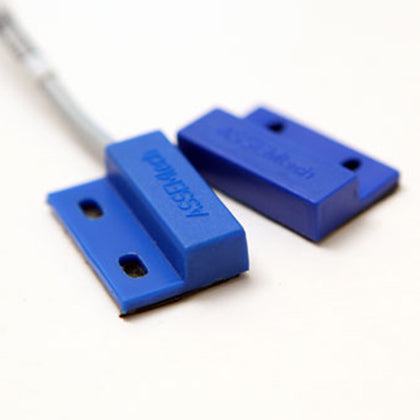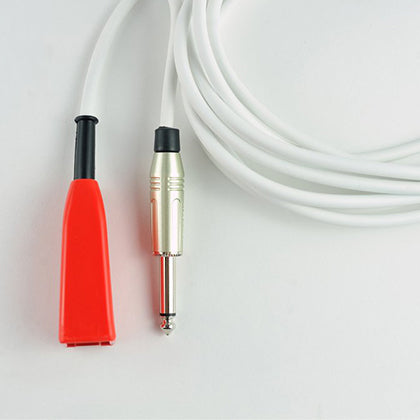Preventing seizures and managing seizure disorders requires taking your medication on time, sleeping well, eating right, and avoiding stress. In this guide, you'll find effective tips on how to prevent seizures from happening and live a safer, healthier life.
Key Takeaways
-
Adhering to anti-seizure medications and regular consultations with healthcare providers are essential for effective seizure management.
-
Maintaining a balanced diet, ensuring adequate sleep, and managing stress through techniques like mindfulness can significantly help reduce seizure frequency.
-
Utilising technology, such as wearable seizure monitors and devices like the Wireless Convulsion Sensor Mat by Frequency Precision, enhances safety and enables timely intervention during seizures.
-
Understanding how seizures affect mental health and daily life is crucial for comprehensive seizure management.
Understanding Seizures
Seizures are a complex phenomenon that can arise from various factors, including genetic predisposition, brain injuries, infections, and certain medications. At their core, seizures are caused by abnormal electrical activity in the brain. This disruption can manifest in different ways, depending on which part of the brain is affected.
Seizures can be broadly classified into different types, such as focal seizures, generalised seizures, and absence seizures. Each type has its own unique characteristics and symptoms. For instance, focal seizures are limited to one part of the brain, while generalised seizures involve both sides of the brain.
Identifying and managing seizure triggers is crucial for preventing seizures. Common triggers include stress, sleep deprivation, fever, and certain medications. People with epilepsy can take proactive steps to prevent seizures by maintaining a healthy lifestyle. This includes getting regular sleep, eating a balanced diet, and engaging in regular exercise. By understanding the nature of seizures and their triggers, individuals can better manage their condition and reduce the frequency of seizures.
Types of Seizures
Seizures come in various forms, each with distinct characteristics and symptoms. Understanding these differences is key to effective management and treatment.
Focal Seizures: Also known as partial seizures, these occur when abnormal electrical activity is confined to one part of the brain. Symptoms can vary widely but may include unusual sensations, movements, or behaviors. Since only half the brain is affected, focal seizures can cause symptoms like numbness, tingling, or weakness in specific areas of the body.
Generalised Seizures: These involve both sides of the brain and can lead to a loss of consciousness, falls, or massive muscle contractions. Generalised seizures are further divided into several subtypes, each with its own set of symptoms.
Absence Seizures: Also known as petit mal seizures, these are a type of generalised seizure characterised by brief lapses in consciousness. Individuals may appear to be staring blankly into space for a few seconds, often without any memory of the event.
Tonic-Clonic Seizures: Previously known as grand mal seizures, these are another type of generalised seizure. They involve a combination of muscle stiffness (tonic phase) and rhythmic muscle contractions (clonic phase), often resulting in convulsions and loss of consciousness.
By recognising the different types of seizures and their symptoms, individuals and caregivers can better prepare for and respond to seizure events, ensuring timely and appropriate care.
Adhere to Anti-Seizure Medications

Effectively managing a seizure disorder necessitates strict adherence to anti-seizure medication regimens. Consistent medication compliance is crucial in preventing seizures and minimising seizure symptoms and side effects. Taking medications as prescribed is vital, as noncompliance can lead to increased frequency and intensity of seizure disorders.
People with epilepsy should understand that discontinuing anti-epileptic medications after seizures cease can result in withdrawal seizures. These medications are designed to prevent seizures and minimise side effects, so maintaining a consistent medication routine is essential for long-term control of tonic-clonic seizures and overall well-being.
Collaborating closely with your healthcare provider is key to ensuring your medication plan remains effective and manageable. Regular consultations help in adjusting dosages and addressing any side effects, keeping you aligned with your treatment.
Ensure Adequate Sleep
Adequate sleep is vital for seizure management. Sleep deprivation can trigger and worsen seizures, particularly in individuals with epilepsy. Establishing regular sleep patterns, including consistent bedtimes and wake-up times, enhances sleep quality and seizure control.
Good sleep hygiene is essential. This includes maintaining a regular bedtime, minimising distractions, avoiding large meals before bed, and incorporating exercise into your routine. Alcohol can disrupt sleep patterns and increase the likelihood of seizures, so it's best avoided.
Prioritising sleep and following these guidelines helps individuals with epilepsy reduce seizure risk and improve their quality of life. A well-rested body is better equipped to handle the challenges of managing seizures.
Maintain a Balanced Diet

Maintaining a balanced diet is essential for managing seizures. Regular meals help keep blood sugar levels stable, which can prevent seizures. Missing meals can lead to hypoglycemia, a condition that may trigger seizures.
The ketogenic diet, characterised by high fat and very low carbohydrates, has shown promise in controlling seizures for some people. Modified diets like the low glycemic index diet are also being explored for their potential benefits.
Before making significant dietary changes, consult with a doctor or specialist. They can provide guidance on the best dietary strategies tailored to your condition, ensuring that any adjustments support your health and seizure management goals.
Avoid Alcohol and Recreational Drugs
Individuals with epilepsy should steer clear of alcohol and recreational drugs. Excessive alcohol consumption can provoke seizures and interfere with anti-seizure medications. Binge drinking, in particular, heightens the risk of seizures during the hangover phase. Recreational drugs such as amphetamines and ecstasy are also associated with increased seizure frequency.
To minimise seizure risk, limit alcohol consumption and avoid recreational drugs. These substances can adversely affect brain cells and disrupt your seizure treatment plan. Making healthier choices helps prevent future seizures and enhances control over your condition.
A lifestyle free from alcohol and drugs supports seizure management and contributes to overall well-being. This critical step ensures a safer and healthier life for those living with epilepsy.
Manage Stress Effectively
Stress is a well-known seizure trigger, making effective stress management crucial. Mindfulness meditation can significantly reduce stress and lower the chances of seizures. Focusing on breathing during mindfulness exercises helps individuals stay grounded and alleviate anxiety.
For beginners, short meditation sessions are recommended to gradually acclimate to mindfulness practices. Consistent mindfulness practice yields long-term stress reduction benefits and is linked to improved focus, cognitive function, and emotional regulation.
By managing stress effectively, individuals with epilepsy can better control their seizure triggers and enhance their overall quality of life. Mindfulness and other stress-reduction techniques are invaluable tools for improved seizure management.
Regular Exercise
Regular physical activity can significantly enhance seizure control for individuals with epilepsy by reducing stress levels, a known seizure trigger. Exercise promotes overall health and aids in more effective seizure management.
Exercise safely by avoiding dehydration, overexertion, and low blood sugar. While exercise usually doesn't trigger seizures, taking necessary precautions ensures a safe and beneficial experience.
Incorporating regular exercise into your routine improves seizure management and boosts overall well-being. It's a powerful tool in the holistic approach to epilepsy care, supporting both physical and mental health.
Monitor Fevers Closely
For children, closely monitoring fevers is vital, as high fevers can trigger febrile seizures. While generally brief and not causing lasting health issues, febrile seizures can be distressing for parents. Standard treatments include acetaminophen or ibuprofen, but these medications do not prevent febrile seizures.
If a febrile seizure lasts more than 5 minutes, seek emergency medical assistance. Monitor children's sleep habits closely, as they typically require more sleep than adults. If a child has a high fever, contact a medical professional for guidance.
Being vigilant about fevers and responding promptly helps reduce the risk of febrile seizures and ensures the child's safety. This is an important aspect of managing seizures in children and provides peace of mind for caregivers.
Identify and Avoid Seizure Triggers

Identifying and avoiding seizure triggers is essential in managing epileptic seizures, as not all seizures are caused by the same factors. Triggers can differ greatly from one person to another and may include stress, sleep deprivation, and certain foods.
Stress is a frequently reported trigger for seizures. Some individuals may experience reflex seizures in response to specific stimuli. Severe deficiencies in minerals like sodium, calcium, and magnesium can disrupt brain cell activity, potentially leading to seizures.
Keeping a seizure diary is beneficial for identifying patterns and potential triggers by recording activities and feelings prior to a seizure. This provides valuable insights, enabling more effective management. Adjusting behavior and environment to minimise triggers is crucial for enhancing seizure control and quality of life.
Proactive and vigilant individuals with epilepsy can better manage their condition and reduce the occurrence of recurrent seizures. Understanding and avoiding triggers is a vital step.
Consult a Specialist Regularly
Regular consultations with a specialist ensure effective seizure management through timely diagnosis and appropriate treatment plans. Evaluations by a neurologist help adjust medications based on seizure frequency and side effects.
Specialists recommend urgent assessments to prevent complications. Neurologists investigate seizure causes and create personalised treatment plans. An epilepsy nurse can provide additional support and bridge communication between patients and neurologists.
Creating a lifestyle modification plan is crucial for managing epilepsy effectively. Consulting healthcare professionals for lifestyle changes ensures your treatment plan is tailored to your specific needs and circumstances.
Safety Measures During Seizures
Safety during a seizure is paramount. Avoid potential injury by moving harmful objects away from the person. If you can tell someone is about to have a seizure, guide them to a safe location. If someone experiences a warning sign, they should get to a safe place and alert someone if possible.
After a seizure ends, ensure the person is safe and comfortable in a recovery position. Recovery can take minutes to several hours. If a seizure occurs at work, meet with a supervisor to discuss individual needs and support.
Individuals with epilepsy should take necessary safety measures while exercising, such as having a buddy system. These safety measures help prevent injuries and ensure a safer environment during a seizure.
Lifestyle Modifications to Prevent Seizures
Lifestyle modifications play a significant role in managing epilepsy. Quality of sleep, not just quantity, is crucial in reducing seizure likelihood. Lifestyle changes and home remedies are recommended for effective seizure management.
In addition to sleep, maintaining a balanced diet, managing stress, and engaging in regular exercise are important lifestyle modifications. These changes help reduce seizure frequency and improve overall health.
Set regular sleep schedules, eat balanced meals, practice mindfulness, and incorporate physical activity into your routine. These changes can significantly improve seizure management and overall well-being.
Use Technology for Monitoring
Technology has revolutionised seizure monitoring. The Embrace2 device is the first FDA-approved wrist-worn monitor for detecting convulsive seizures and alerting caregivers. Wearable devices like Embrace2 use multiple sensors to monitor physiological changes associated with seizures.
These devices send alerts via a companion app to notify caregivers immediately when a seizure is detected. Integrating technology in seizure monitoring ensures safety and timely intervention.
By leveraging technology, individuals with epilepsy can enhance safety and gain peace of mind. Wearable devices are increasingly adopted for monitoring seizure activity, providing a valuable tool for better seizure control.
Vagus Nerve Stimulation and Other Treatments
Vagus nerve stimulation (VNS) is a treatment for individuals whose seizures don't respond to medications and cannot be treated surgically. VNS uses a device to send electrical signals to the brain through the vagus nerve, potentially reducing the number and intensity of seizures.
Regular programming and follow-up visits to healthcare providers are essential for managing VNS therapy. Neurostimulation devices aim to reduce the frequency of seizures and can be used when the brain area can't be surgically removed. The pacemaker device in epilepsy treatment monitors brain waves and provides electrical stimulation to prevent seizures.
Continued use of anti-seizure medications is necessary alongside electrical stimulation devices for seizure relief. Other therapies being studied to treat seizures include MRI-guided focused ultrasound, which aims to destroy brain tissue causing seizures without surgery. These treatment options provide hope for better seizure management and improved quality of life.
If you're concerned about the safety of loved ones experiencing frequent epileptic seizures, reaching out to Frequency Precision could be beneficial. They offer innovative monitoring solutions that help detect seizures early and alert caregivers promptly. Their products, like the Wireless Convulsion Sensor Mat, are designed to provide peace of mind and enhance safety for both adults and children.
The Wireless Convulsion Sensor Mat & Pager Set by Frequency Precision is designed to enhance seizure monitoring and alert caregivers quickly.

For those seeking enhanced seizure monitoring, the Wireless Convulsion Sensor Mat & Pager Set by Frequency Precision provides a dependable solution. This sensor mat, placed under bedding or a mattress, detects movement or convulsive activity, offering a non-intrusive way to monitor seizures. It's an ideal choice for both home and institutional environments.
A key feature of this system is its wireless connectivity, which allows the mat to transmit data to a pager or receiver in real-time, ensuring caregivers receive immediate alerts without needing to be in the same room. This prompt alert system is crucial for timely intervention during a seizure.
The mat's adjustable sensitivity settings help reduce false alarms while ensuring actual seizures are detected. Being battery-operated ensures it functions during power outages, providing flexibility in placement. Easy to set up and integrate into existing care routines, this device is an invaluable tool for managing epilepsy and improving seizure control.
Coping and Support
Living with a seizure disorder can be challenging, but there are numerous ways to cope and manage seizures effectively. Support groups, counseling, and education about the condition can provide invaluable assistance to people with epilepsy.
Managing seizures requires a comprehensive approach that includes medication, lifestyle changes, and stress management. Advanced treatment options like deep brain stimulation and vagus nerve stimulation offer hope for those who have not responded to traditional treatments. Deep brain stimulation involves implanting a device that sends electrical impulses to specific brain areas, while vagus nerve stimulation uses a device to stimulate the vagus nerve, helping to prevent seizures.
Mental health is a crucial aspect of living with a seizure disorder. People with epilepsy are at a higher risk of developing mental health conditions such as depression and anxiety. Seeking professional help and support is essential for managing these conditions and improving overall well-being.
Recurrent seizures can be particularly challenging to manage, but there are strategies to prevent them. Identifying and managing seizure triggers, maintaining a healthy lifestyle, and adhering to medication regimens are all critical steps in preventing seizures.
Traumatic brain injury can increase the risk of developing a seizure disorder. Individuals who have experienced a traumatic brain injury should seek medical attention immediately and follow up with a healthcare professional to monitor for seizure activity.
By adopting a comprehensive approach to managing seizures, individuals can improve their quality of life and reduce the frequency of seizures. Support from healthcare professionals, family, and friends is vital in navigating the challenges of living with a seizure disorder.
Summary
In summary, managing epilepsy and preventing seizures involves a multifaceted approach. From adhering to anti-seizure medications and maintaining a balanced diet to leveraging technology and consulting specialists, each step plays a crucial role in achieving better seizure control. Lifestyle modifications, stress management, and regular exercise further support individuals in reducing seizure frequency and improving their quality of life.
Living with epilepsy can be challenging, but with the right strategies and support, individuals can lead safer, healthier lives. By staying informed and proactive, you can make significant strides in managing epilepsy effectively. Remember, every small step towards better management counts and brings you closer to a seizure-free life.
Frequently Asked Questions
What should I do if someone is having a seizure?
If someone is having a seizure, ensure their safety by clearing away harmful objects and guiding them to a safe area if possible. After the seizure, place them in the recovery position and stay with them until they are fully alert, seeking medical help if the seizure lasts over five minutes or if it's their first occurrence.
How can I identify my seizure triggers?
To identify your seizure triggers, maintain a detailed seizure diary that tracks activities, food intake, sleep patterns, and stress levels. This will help you and your healthcare professional recognise patterns and manage your specific triggers effectively.
Are there any dietary changes that can help control seizures?
Implementing a balanced diet and considering the ketogenic diet can help manage seizures by stabilising blood sugar levels. Always consult a specialist before making any significant dietary changes to ensure safety and effectiveness.
How does technology help in monitoring seizures?
Technology, like the Embrace2 device, significantly enhances seizure monitoring by using sensors to detect physiological changes and send timely alerts to caregivers. This integration not only improves safety but also offers essential peace of mind for individuals with epilepsy and their families.
What are the benefits of Vagus Nerve Stimulation (VNS) for seizure treatment?
Vagus Nerve Stimulation (VNS) can significantly reduce the frequency and severity of seizures in individuals unresponsive to medications or ineligible for surgery, improving overall quality of life. Regular follow-up and programming are crucial for optimising VNS therapy.

